Categories
Latest Updates
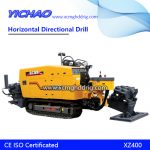
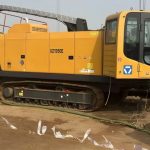
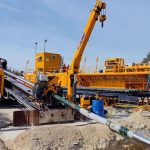
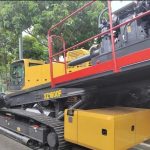
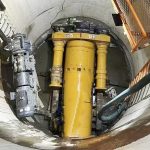
In recent years, China has made great progress in laying various pipelines using non-excavation horizontal directional drilling technology, and has been widely used in pipeline installations such as telecommunications, tap water, sewage, gas, electricity and heat. In order to make the horizontal directional drilling project of this project have rules to follow, and to ensure the construction quality and reduce the occurrence of various accidents, a technical plan for laying horizontal directional drilling pipelines has been specially formulated.
1.1 Non-excavation technology: Construction techniques for the exploration, laying, replacement and repair of various underground pipelines with minimal surface excavation.
1.2 Horizontal directional drilling: A horizontal directional drilling rig is used to control the drilling trajectory, drilling in different formations and depths, and guiding the construction method of underground pipeline construction by locator guiding to the design position. During construction, the pilot hole is first drilled into the small diameter guide hole; then the drill hole is used to expand the hole to the required diameter; finally, the production tube is pulled into the hole.
1.3 Jacking/Starting Work Pit: A work pit excavated for the placement of horizontal directional drilling construction storage mud.
1.4 Accepting/Exporting Work Pit: A work pit excavated for the recovery of horizontally directional drilling into the mud discharged from the construction. There is a target working pit.
1.5 Crossing: Non-excavation construction of pipelines crossing obstacles (rivers, buildings, railways, highways, etc.) under the surface.
1.6 Drilling fluid/mud: Usually refers to a mixture of water and earthworm or polymer.
1.7 Guide hole: When drilling in a directional drilling direction, first use the guiding instrument to measure and control the small diameter drilling hole drilled in the drilling direction.
1.8 Inlet/Exit Dip: The angle at which the drill string enters the formation or is drilled from the formation during horizontal directional drilling.
1.9 Backward expansion: When drilling horizontally, after drilling the guide hole, it is often necessary to enlarge the diameter of the drill hole. At this time, the back drill bit is connected to the front end of the drill pipe string to pull back to rebuild the hole.
1.10 Re-drilling bit: For horizontal directional drilling, after drilling the guiding hole, it is used to enlarge the guiding hole and the cutting head attached to the front end of the drill string.
1.11 Pull back: During horizontal directional drilling, the enlarged drilling hole pulls the drill string from the exit pit back to the launching pit, and the construction process of the production pipe is laid.
1.12 Production pipe: various permanent underground pipelines laid for different purposes. The production pipe of this project is DN100PE plastic pipe.
1.13 Locator: An electronic instrument used to determine the position and intensity of electromagnetic wave signals emitted from a transmitting probe. It can also be used to detect the location of underground pipelines.
1.14 Measurement while drilling: Continuous measurement of measurement techniques related to drilling information while drilling.
In the trenchless technology industry, horizontal directional drilling is one of the main growth areas. At present, in the oil, natural gas, water, power and telecommunications sectors, horizontal directional drilling has become a widely recognized pipe laying construction technology. Due to the improved construction accuracy of horizontal directional drilling, it can also be used for sewage pipes and other gravity pipelines. Laying.
Compared with other construction methods, horizontal directional drilling has the least impact on the environment, can provide a large depth of pipeline coverage under obstacles, has a large protective effect on pipelines, and has low maintenance costs, and in many cases, the cost is lower.
Horizontal directional drilling through the laying construction is commonly used: first drilling into the guiding hole, then reaming, and finally back to pull the pipe construction technology.
3.1 Guide hole: The guide hole is drilled by a small-diameter comprehensive drill bit for full-hole bottom drilling. On the bottom lip of the drill bit or on the drill, a special mechanism for controlling the direction of the drill is installed. A measuring probe is mounted in the drill or immediately after it. During the drilling process, the probe continuously or intermittently measures the drilling position parameters and transmits the measurement data to the surface receiver in real time via wireless or wired means. Based on these data and the charts obtained by processing the data, the operator takes appropriate technical measures to adjust the mechanism for controlling the drilling direction in the hole, thereby manually controlling the trajectory of the drilling to meet the design requirements.
The mechanism for controlling the drilling direction in the hole of the project is that the bottom lip surface of the drill bit is designed with an unbalanced structure. If the lip surface of the drill bit is a slope, the drill hole is drilled into the straight hole when the drill bit is continuously rotated, and the drill hole is drilled when the drill bit is not rotated. Drilling is skewed. This type of method is required to break the rock formation under the condition of no rotation, so the drilling is carried out by using the drilling fluid injection assisted crushing method in the soft soil layer.
3.2 Reaming: After the pilot hole is completed, the hole must be enlarged to a diameter suitable for the laying of the finished pipe. Generally, the reamer is connected to the drill pipe at the exit pit opposite to the rig, and then pulled back for expansion. The reaming can be performed at one time depending on the diameter of the guide hole and the diameter of the hole suitable for the finished pipe and the situation of the site. The final reaming diameter is 1.2 times the outer diameter of the PE tube, ie 158 mm.
3.3 Pull tube: After the hole expansion is completed, the DN100PE pipe to be laid can be pulled. The pipe should be fully hot-melted in advance to facilitate one pull.
When pulling the pipe, the reamer should be connected to the drill pipe and then connected to the pipe’s slider through a single-action joint. The single-action joint can prevent the pipeline from rotating together with the reamer, ensuring that the pipeline can be smoothly returned smoothly.
4.1 Drilling Rig: The drilling rig adopts a surface-drilling drilling rig with a walking mechanism for easy migration.
4.2 Drilling fluid: The drilling fluid used in this project uses mud. The drilling fluid can cool, lubricate the drill bit, soften the formation, assist the fractured formation, adjust the drilling direction, carry debris, stabilize the hole wall, retract the pipe and lubricate the pipe.
